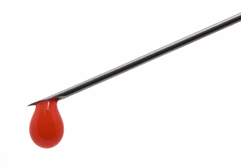Today’s BMJ carries a short report of the World Drug Report, launched at the UN headquarters in New York where the UN’s secretary general Ban Ki-moon, said that illicit drugs cause some 200 000 deaths each year.
BMJ 2011;342:d4078 doi: 10.1136/bmj.d4078
These numbers add up to a global tragedy,” said Mr Ban, also emphasising that people who are dependent on illicit drugs should not be discriminated against in healthcare. “They should be treated by medical experts and counsellors. Drug addiction is a disease, not a crime,” he said.
How does that impact on the work and welfare of waste handlers? Those servicing healthcare wastes should be largely unaffected, save for the constant vigilance and use  of appropriate PPE together with exemplary standards of hand hygiene.
of appropriate PPE together with exemplary standards of hand hygiene.
Workers tasked with clearing or otherwise exposed to drug litter face a considerable risk of infection if sharps injury occurs. The scale of the problem is exemplified by some simple statistics. Worldwide, about 210 million people, or 4.8% of the population aged 15-64 years, took illicit substances (such as opium, heroin, cocaine, and amphetamine type stimulants such as ecstasy) at least once in the previous year, the report says. There are around 16 million injecting drug users.
The report says that infection with hepatitis B and C also pose “significant public health concerns, giving rise to considerable morbidity and mortality among drug users.” About half the world’s injecting drug users, about eight million people, are infected with hepatitis C, although 13 countries not including the UK reported a prevalence in this group higher than 70%, says the report. The agency also estimates that about 22% of injecting drug users, or about 3.5 million people, are infected with the hepatitis B virus.
So what about that sharps injury from a discarded needle found in the community? The user is unknown and it will almost never be possible to find them and check their infection status. On the basis of these data, the chance of the needle user being Hep B positive is around 22% and for Hep C about 50%.
Those data indicate vividly the risks involved and all of those who may come into contact with drug litter and discarded needles must take all due precautions. PPE items and all appropriate safety equipment are essential, with immediate specialist healthcare for anyone who is exposed.
This should be set against the findings of the national audit of Local Authority management of drug litter discarded in the community undertaken by Blenkharn Environmental. This audit identified many LAs giving advice to members of the public that was palpably unsafe and contrary to all best practice guidelines. An upate of that audit is in progress and though there has been improvement that improvement is small. The updated audit is currently in preparation for publication and will be available soon.
World Drug Report 2011 is at www.unodc.org/unodc/en/data-and-analysis/WDR-2011.html
